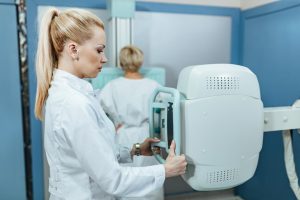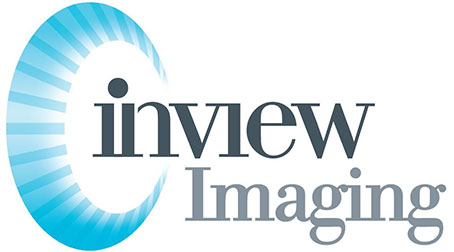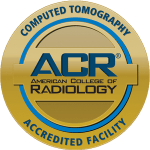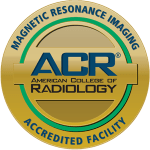Did you know that 1 in 8 women in the United States will develop breast cancer in her lifetime? Early detection is crucial, making mammogram screenings essential. At Inview Imaging in Oakland, our radiologists prioritize your health by offering state-of-the-art mammogram screening services for cancer detection in breast tissue.
Our advanced technology and experienced professionals ensure improved accuracy in tests and a comfortable experience. Stay proactive about your health and schedule your mammogram screening appointment with us today for breast cancer detection, peace of mind, and to take control of your well-being.
Key Takeaways
-
Regular mammogram screenings are crucial for early detection of breast cancer, increasing treatment success rates.
-
Understanding the different types of mammograms, including 3D mammograms, can help individuals make informed decisions about their screening options for breast cancer.
-
Breast density plays a significant role in mammogram effectiveness, influencing the visibility of potential abnormalities.
-
High-risk individuals, such as women with a family history of breast cancer, may consider starting screenings earlier to detect abnormalities and discuss personalized screening plans with their healthcare providers.
-
Opting for 3D mammograms can provide improved accuracy in detecting breast abnormalities, which may include cancer, in women compared to traditional 2D mammograms.
-
Residents in Oakland, especially women, should prioritize accessing quality mammogram services to ensure timely screenings and follow-ups for optimal breast health care and early detection of abnormalities and cancer through images.
Importance of Mammogram Screening

Diagnostic Clarity
Receiving clear and accurate diagnostic results, especially in mammogram images, is crucial in detecting breast abnormalities and cancer early in women. Mammogram screenings play a vital role in achieving this goal by providing detailed images of the breast tissue to detect abnormalities in women with accuracy. This clarity enables healthcare providers to identify potential issues promptly.
Early detection through mammograms, which provide accurate images of abnormalities, leads to better treatment outcomes for individuals with breast cancer. By spotting abnormalities at an early stage, medical interventions can be initiated swiftly, increasing the chances of successful treatment. The accuracy of mammogram results, especially in detecting abnormalities in breast tissue, significantly impacts the effectiveness of subsequent healthcare decisions.
High-Quality Care
Ensuring patients receive high-quality care, especially in mammogram screenings for breast cancer, is paramount in the field of medical services to detect abnormalities in breast tissue images. Inview Imaging prioritizes top-notch care by employing experienced radiologists who specialize in interpreting mammogram results accurately to detect abnormalities in breast tissue. This expertise translates into precise diagnoses and tailored treatment plans for patients.
The benefits of high-quality care extend beyond accurate diagnoses; they also contribute to improved patient satisfaction and health outcomes. Patients feel reassured and supported when they receive personalized attention and expert guidance throughout their screening process. This level of care fosters trust between patients and healthcare providers, leading to better overall experiences.
Affordable Services
Inview Imaging is dedicated to offering affordable services to ensure that all individuals have access to quality healthcare, including mammogram screenings for breast tissue abnormalities and cancer. By keeping costs reasonable, more people can benefit from essential screening services without financial strain. This commitment aligns with the goal of promoting preventive healthcare practices among diverse populations.
Compared to competitors, Inview Imaging stands out for its cost-effective nature, making mammogram screenings accessible to a wider demographic. Affordability plays a critical role in encouraging individuals to prioritize their health and undergo regular screenings for early detection of potential health issues. By removing financial barriers, more people can take proactive steps towards maintaining their well-being.
Types of Mammograms
2D vs 3D
2D mammogram images provide a flat view, while 3D mammogram images offer a more detailed three-dimensional view. The technology used in 2D involves taking two X-ray images of each breast from different angles. In contrast, 3D mammography captures multiple images to create a layered view.
The methodology behind 2D mammograms focuses on examining the breast tissue layer by layer in a single image. On the other hand, 3D screenings involve taking several X-ray images to create a clearer picture and detect abnormalities more effectively.
When comparing the advantages of each screening method, 3D mammograms have shown to be superior in detecting cancers, especially in women with dense breast tissue. However, one limitation of 3D is its higher radiation dose compared to 2D.
Advantages of 3D
The specific advantages of 3D mammogram screenings lie in their ability to reduce false positives and negatives compared to traditional 2D screenings. This improvement leads to fewer callbacks for additional imaging tests, reducing anxiety for patients.
In terms of accuracy and detection rates, 3D technology enhances the visibility of small masses and lesions that may be hidden in overlapping tissues on a 2D image. This increased accuracy results in earlier detection of breast cancer, leading to better treatment outcomes.
Furthermore, 3D mammography is particularly beneficial for women with dense breast tissue as it can detect abnormalities that may be obscured on a standard 2D image. This advancement allows for more precise diagnosis and tailored treatment plans for individuals with dense breasts.
Breast Density and Mammogram Effectiveness
Understanding Density
Breast density refers to the amount of fibrous and glandular tissue compared to fatty tissue in the breasts. Dense breasts have more fibrous or glandular tissue than fatty tissue. This can make it challenging to detect abnormalities on a mammogram. Understanding breast density is crucial as it impacts the accuracy of mammogram results. Women with dense breasts are at a higher risk of having their cancers missed on traditional 2D mammograms.
Breast density can vary among individuals, affecting how well abnormalities are detected on mammograms. Dense breast tissue appears white on a mammogram, similar to cancerous tissues, which also appear white. This similarity in appearance can lead to false positives or negatives during screenings. To address this challenge, personalized screening approaches tailored to an individual’s breast density are essential for improving detection rates.
Impact on Detection
The impact of breast density on detecting abnormalities during mammograms is significant. In dense breasts, abnormalities like tumors can be masked by the surrounding dense tissue, making them harder to identify. Detecting abnormalities in dense breast tissue poses challenges for radiologists, increasing the likelihood of false results or missed diagnoses. Advanced technologies such as 3D mammograms have shown promise in overcoming these challenges by providing clearer images and enhancing detection rates.
In dense breast tissue, the accuracy of traditional 2D mammograms may be limited due to overlapping structures that can obscure abnormalities. However, 3D mammography, also known as tomosynthesis, offers a more detailed view of the breast by capturing multiple images from different angles. This technology helps radiologists differentiate between normal and abnormal tissues more effectively, reducing false alarms and improving early detection capabilities.
Recommendations for High-Risk Individuals
American Cancer Society Guidelines
The American Cancer Society (ACS) recommends that individuals with a family history of breast cancer start mammogram screenings earlier. Regular screenings should begin at age 30 for those with a higher risk due to genetic predisposition or family history. Following these guidelines is crucial for early detection and effective treatment of breast cancer.
-
Starting screening at age 30 for high-risk individuals.
-
Emphasizing the significance of adherence to ACS guidelines for timely detection.
Dense Tissue Focus
Screening dense breast tissue poses challenges in detecting abnormalities accurately. Inview Imaging specializes in catering to patients with dense breast tissue, utilizing advanced imaging techniques to ensure precise results. The practice’s tailored approach guarantees thorough and reliable screenings, enhancing early detection rates.
-
Challenges in screening dense breast tissue accurately.
-
Inview Imaging’s specialized methods for accurate screenings in dense breast tissue.
Benefits of 3D Mammograms
Improved Detection Rates
Advanced technologies, such as 3D mammograms, significantly enhance detection rates by providing a more detailed view of breast tissue. This leads to earlier identification of abnormalities that may not be visible on traditional 2D mammograms. The improved detection rates play a crucial role in detecting cancer at its earliest stage, increasing the chances of successful treatment and recovery.
False alarms during mammogram screenings can cause unnecessary anxiety and stress for patients. With 3D mammograms, the risk of false alarms is reduced due to the enhanced imaging capabilities. This reduction in false alarms not only alleviates patient anxiety but also helps in avoiding unnecessary follow-up procedures, minimizing emotional distress and saving time and resources for both patients and healthcare providers.
The impact of improved detection rates goes beyond early diagnosis; it directly influences patient outcomes and survival rates. By enabling healthcare providers to detect smaller tumors and abnormalities earlier, 3D mammograms contribute to more effective treatment plans. Patients diagnosed at an early stage have better chances of successful treatment outcomes, leading to higher survival rates and improved overall quality of life.
Reduced False Alarms
Reduced false alarms achieved through advanced screening technologies like 3D mammograms play a significant role in enhancing the efficiency and reliability of screening processes. Patients undergoing mammogram screenings often experience heightened anxiety when faced with the possibility of a false alarm result. The use of 3D mammograms reduces this anxiety by providing clearer images that minimize the chances of misinterpretation or unnecessary concern.
-
Improved accuracy: 3D mammograms offer enhanced accuracy in detecting abnormalities, reducing the likelihood of false alarms that can lead to unnecessary biopsies or additional imaging tests.
-
Enhanced peace of mind: Patients benefit from reduced false alarms as they can undergo screenings with confidence in the results, leading to a more positive overall experience during the screening process.
Accessing Care in Oakland
Local Services
In Oakland, Inview Imaging offers convenient and accessible mammogram screening services. Patients benefit from the ease of reaching a local provider for their healthcare needs. The proximity of services ensures quick access to screenings and follow-up appointments.
Receiving healthcare services from a local provider like Inview Imaging brings numerous benefits. Patients experience shorter wait times, reduced travel costs, and increased convenience. Local services also foster a sense of familiarity and comfort, enhancing the overall patient experience.
The personalized and community-focused approach of local services at Inview Imaging sets them apart. Patients receive individualized care tailored to their specific needs. The practice’s emphasis on community engagement creates a supportive environment for patients undergoing screenings.
Community-Based Approach
Inview Imaging’s commitment to a community-oriented philosophy is evident in its healthcare delivery. The practice has been serving the San Francisco Bay Area community for years, establishing trust and rapport with residents. This long-standing presence reflects the dedication to improving community health.
A community-based approach at Inview Imaging enhances patient trust and satisfaction. By engaging with local residents and understanding their unique needs, the practice builds strong relationships with patients. This approach fosters a sense of belonging and encourages regular health screenings among community members.
Emphasizing patient well-being, Inview Imaging’s community-based strategy focuses on preventive care and early detection. By prioritizing education and outreach programs, the practice promotes awareness about the importance of regular mammogram screenings. This proactive approach contributes to better health outcomes for individuals in the Bay Area community.
Closing Thoughts
Ensuring regular mammogram screenings is vital for your breast health. Understanding the different types of mammograms and their effectiveness based on breast density can empower you to make informed decisions. For high-risk individuals, following tailored recommendations and opting for advanced 3D mammograms can significantly enhance early detection and treatment outcomes. Accessing care in Oakland is convenient, so prioritize scheduling your screening to stay proactive about your well-being.
Take charge of your health today by scheduling your mammogram screening at a trusted facility like Inview Imaging in Oakland. Early detection saves lives, and your commitment to regular screenings can make a significant difference in detecting any potential issues early on. Stay proactive, stay informed, and prioritize your breast health for a better tomorrow.
Frequently Asked Questions
What is the importance of mammogram screening?
Mammogram screening is crucial for early detection of breast cancer, increasing treatment success rates. It helps detect abnormalities before symptoms arise, improving chances of successful treatment and reducing mortality rates.
What are the types of mammograms available?
There are two main types: 2D mammograms and 3D mammograms. 2D mammograms take two images of each breast, while 3D mammograms capture multiple images to create a detailed three-dimensional view for better accuracy.
How does breast density affect mammogram effectiveness?
Breast density can make it challenging to detect abnormalities on a mammogram as dense tissue appears white, similar to tumors. Higher breast density may require additional screening tests like ultrasound or MRI for accurate results.
What are the recommendations for high-risk individuals regarding mammogram screenings for breast cancer detection?
High-risk individuals, such as those with a family history of breast cancer, should start screenings earlier and have them more frequently. Consult with a healthcare provider to determine a personalized screening plan based on individual risk factors.
What are the benefits of 3D mammograms for improved accuracy in cancer detection over traditional 2D mammograms?
3D mammograms provide clearer images with less overlap of breast tissue, reducing false positives and improving accuracy in detecting abnormalities. This advanced technology enhances early detection capabilities, leading to better outcomes for patients undergoing screening.


